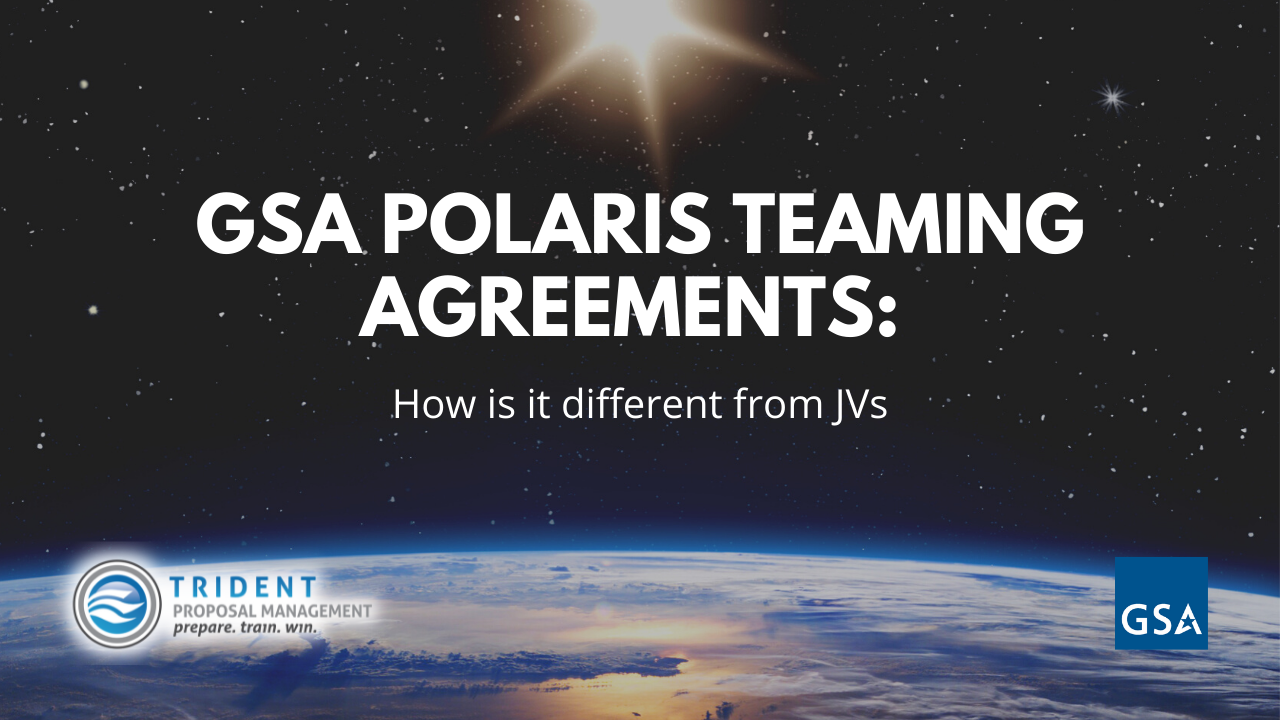GSA Polaris Teaming: How is it Different from JVs?
Jul 01, 2021
You might have read our previous blog about GSA's JV (Joint Venture) in Polaris but, Teaming Agreement for Polaris is another monster by itself that you might want to look into.
This is a snippet for GSA Polaris Teaming discussed. If you want to learn more about Polaris firsthand, don't forget to register for our webinar series on how to become a prime on the Polaris GWAC IDIQ. [Register HERE!]
Teaming Agreements Defined: So, what are teaming agreements in GSA Polaris you say? Well, when two or more companies decide to form a partnership or joint venture to act as a prime contractor, that can be considered as a Teaming Agreement. Another way to put this is when a prime contractor agrees with one or more companies apart from its own to have them act as its subcontractors under a specified Government contract or acquisition program.
Heads up: Teaming agreements for GSA Polaris often only apply to one solicitation or to a specific government program.
How can you benefit from them?
You might ask how does this benefit you if you want to venture into GSA Polaris? Here are some benefits that you might want to know:
- Teaming can limit the parties’ obligation to one another; This means that you can manage the risk without putting too many eggs in just one basket. This also means that while using teaming for Polaris you can test the waters before ultimately deciding whether you want to have a JV with that company or not.
- Team members can tailor their negotiations to the specific solicitation and provide for a variety of termination provisions: Which means that with GSA Polaris teaming, you can limit your obligations, set some clear-cut rules.
- Allow parties employees who are unfamiliar with each other and therefore reluctant to jointly form a new entity to pursue the solicitation; This again is another way of testing the waters especially if you are not really sure what you’re dealing with.
- Reduce risk by requiring the prime contractor and the subcontractor to bear their own preparation costs; This means that you can save a ton with GSA Polaris teaming!
- Provided the parties comply with the limitations on subcontracting (48 C.F.R. § 52. 219-14), the parties will not be considered “affiliates” for small business size calculations. (Please do note that you must do at least 50% of the work to be recognized or else you will be disqualified or not receive the award for Polaris)
Some Caveats you need to think through
- The re-negotiation of a teaming agreement for each solicitation: this could be tedious and time-consuming especially if you do not have templates ready.
- The risk that after the prime contractor receives the prime contract, the prime contractor and the proposed subcontractor will be unable to reach an agreement on the terms of a subcontract”; which means that the subcontracts could fall apart. Therefore, you must do your due diligence and discuss the terms beforehand.
- The Prime contractor is the only party in privity of contract with the government, and therefore bears the entire risk of contract performance; this means that if you are a subcontractor, you don’t really have much control.
How to spot the difference?
Here are some differences that you can compare for you to weigh your options on whether you should choose GSA Polaris JV or GSA Polaris teaming.

Conclusion:
When it comes to choosing, both JV and Teaming have their own pros and cons. It’s up to you if you want to test the waters with Teaming for GSA Polaris and have limited control or go all-in with JV and gain more. How about you? What would you pick?



